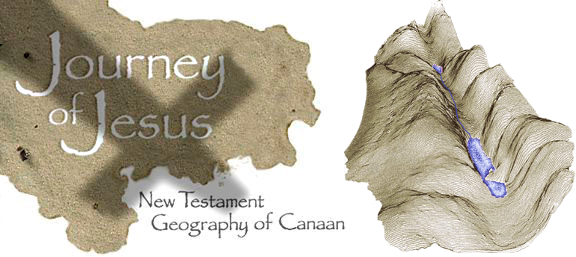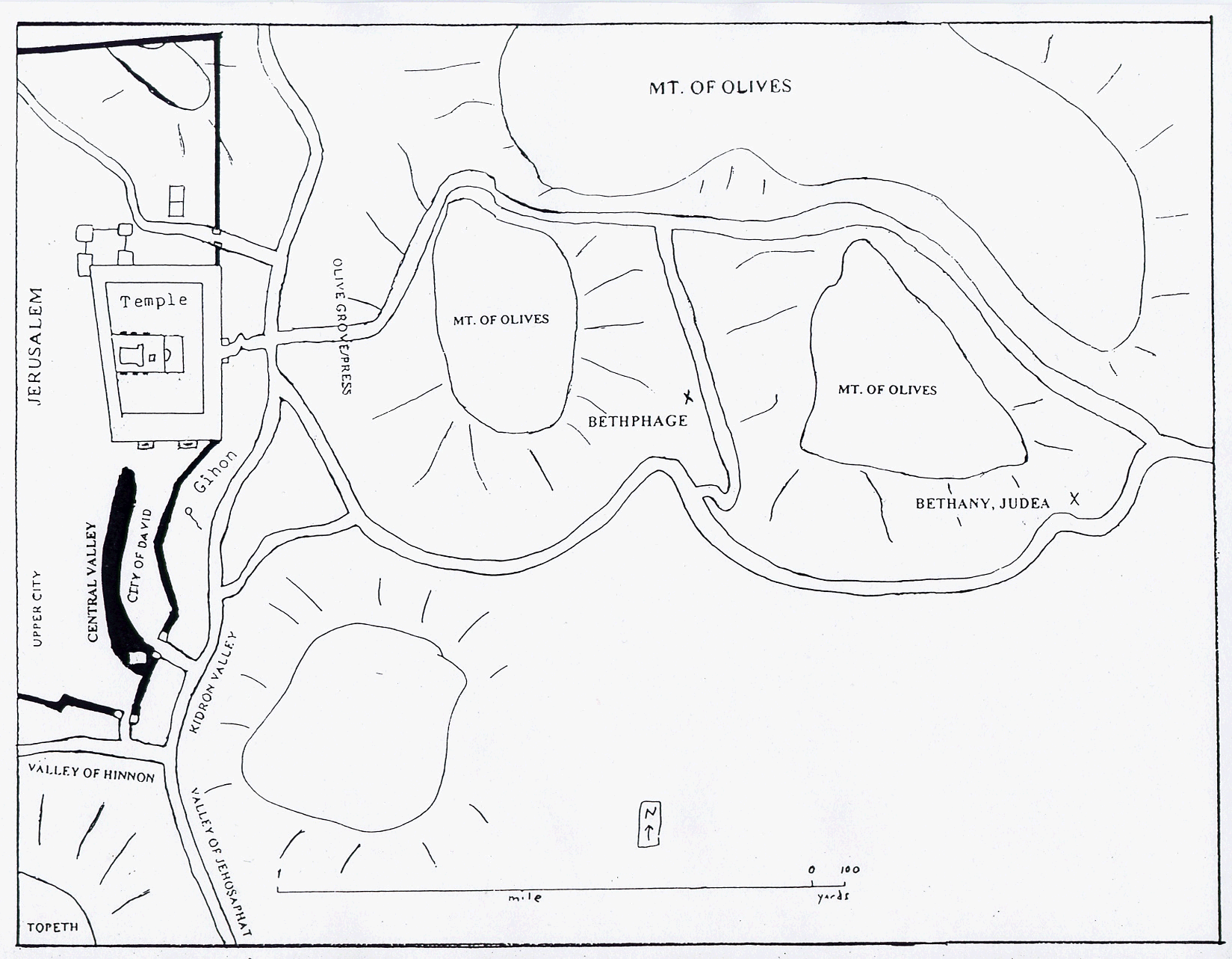68 – Cleansing of The Temple
Where: Jerusalem, Judea
Scripture:
Notes:
Listen to audio
Early on Monday morning, Jesus and the disciples left Bethany, where they had spent the night, and prepared to travel the two miles to Jerusalem. Jesus already believed that the Temple cult would not voluntarily accept him as the Word of God, nor change their ways to become God’s light of justice to the world. They would not let love balance law. They would not tend the tree and produce more fruit.
They had known that the kingdom of God was near when they had heard John the Baptizer proclaim it in the Judean Wilderness. But they choose not to believe John, and they would most likely choose not to believe Jesus either. Now Jesus would have to confront the leaders with God’s ultimatum. ‘Be God’s light of justice to the world and draw all to God, or face the consequences of your violation of the covenant. If you will not change NOW, then God will remove you as the primary missionaries and turn that task over to others who would be THE LIGHT. Produce fruit for God!’
After walking about a mile, Jesus arrived at the road that led north up the valley to Bethphage Jesus saw a lone fig tree by the roadside. It was covered with leaves and one would expect that there would be growing figs. He sat down under the tree.
Bethphage, which means “house of unripe figs”, was known for it’s stunted fig trees, and figs that were hardly considered to be food, even for the poor. The harvest of the fruit from these trees was not even subject to be taxed. Their under ripe fruit, which was still picked and sold in the Jerusalem market before Passover, could be eaten if roasted but were considered to be so bad that the figs were not supposed to be served at a Passover meal.
Jesus then proceeded to tell the disciples about how God had planted Jerusalem (the holy city) in the midst of his garden of Canaan. Then David and Solomon established the nation and Temple around 1000 BC.
Three times God had looked for the “fruit of justice” from Israel. In 721 BC God was disappointed by the lack of fruit and through Assyria warned Israel. In 586 BC God was again disappointed and sent Babylon, but restored Israel in 536 BC through the Persians. Again in 331 BC God sought Israel to be a shining light, and was disappointed. God sent Alexander the Great and yet brought the Maccabees victory against the Syrians in 168 BC.
Now, for the fourth and last time, God was calling on Israel to show the results from their being God’s “light to the world”. John the Baptizer had warned them. Now they must accept or reject the Word of God.
When Jesus stood up, he looked into the tree for some ripe fruit, but there were none. ‘I am here to collect the fruit of the tree that the Father planted in this garden. If Jerusalem rejects the Word of God’, Jesus said, ‘then what happens to this tree will happen to Jerusalem’.
Then Jesus and the disciples continued their journey to Jerusalem. But as they rounded the southern end of the Mount of Olives, Jesus saw Jerusalem and the Temple across the Kidron Valley, as they were lit by the rays of the morning sun. Jesus thought of it’s high calling, and the destruction it would face if its’ leaders did not change when he confronted them. He did not expect the leaders to listen, and he wept for the city and the people inside. ‘Why could you not have chosen to repent? You could have saved everyone a lot of suffering’, whispered Jesus as his chest constricted.
Then Jesus and the disciples entered the Temple complex thorough the eastern gate. He went through the pillared portico and entered the Court of the Gentiles. This was the place set aside for believing non-Jews, to pray and worship. But who could concentrate with all the noise and confusion on the south side?
On the south end of the Temple complex was the “market”, called the Cardo. It was a lively, noisy, and smelly place during the day. Here animals, guaranteed to be without blemish, were sold to travelers who brought money rather then transport an animal. Here, also, the coins that had imprinted on them some impure image or word, were exchanged for pure silver temple shekel that did not violate God’s commandment against idols. Who could pray here? Who could worship God here?
It was here that the anger of Jesus was focused, and where Jesus chose to begin to confront the Temple cult and the religious leaders. How could Israel be God’s light to the world if the Gentiles could not even find a place to pray in God’s temple?
Then to compound the wrong, was the Sanhedrin practice of gaining too much profit because of their virtual monopoly. The court of the Gentiles was a place where the family of Annas felt comfortable abusing the business of sacrifice. You could buy what you needed for your sacrifice, for a stiff fee. After all, everyone who came to Jerusalem was required to spend a percentage of their income in Jerusalem. They might as well spend it to the benefit of the temple cult.
Inside the Cardo, Jesus, full of righteous indignation, began to cut a path of chaos through the money changers, and then through the sellers of animals, where he made a cord from ropes and began to drive the larger animals, and those who were selling them, from their temple stalls. ‘This should be a place of prayer‘, he yelled, ‘not a market place’. It was a mess, and a statement, but not a riot. This was something Jesus had to do, and the disciples were not directly involved.
Then Jesus went back toward the Temple where he gathered with his disciples and followers. He did not fear the Romans. They were on alert in the
Fortress Antonia attached to the north side of the temple platform, but they were holding back because it was obviously not a riot. Even when he blocked some folks who were crossing through the temple complex as a short cut, the Romans did not get directly involved. However Pontus Pilate [the Roman responsible for Judea] did send a message to Caiaphas [the high priest] warning him to be sure to maintain the peace in the future, or the Romans would.
Jesus remained in the complex, under the Portico of Solomon, praying, teaching, and healing. He sat down and told both Jews and Gentiles about the “good news” of the coming kingdom. This was true worship of God. His disciples, followers, and many pilgrims crowded around.
This sudden and bold appearance of Jesus in the temple caught the Sadducees, who were the leaders in charge of the temple, off guard. Jesus had entered into Jerusalem while being proclaimed as the Messiah. The temple leaders met and decided that they wanted to “question” Jesus. They would prefer to do it in private but Jesus apparently wanted to keep it public. They would have to “deal” with this “so called” prophet, but there was nothing they could do right now.
The people were impressed that the religious leaders could do nothing even while Jesus “sat on their front porch”. Just as Jeremiah had been called to boldly proclaim in the temple God’s call for Israel to change its’ ways, so Jesus was also in the temple for the same reason. Jesus was adamant that God MUST be first in the lives of the people. Jesus even refused to explain to the leaders by what right, and on whose authority, he spoke for God. They should know.
Some Gentiles recognized that what Jesus was doing was to try to help Gentiles find God. They approached Philip and asked for some private time with Jesus. Philip spoke to Nathaniel, who approached Jesus. Jesus now knew that at least the non-Jews had heard him, and as the sun was going down in the west, he left the temple and went back to the Mount of Olives, to an olive orchard, to teach for a while.
When it grew late, well after dark, Jesus led his disciples eastward over the top of the Mount of Olives and then east to Bethany, where they would spend the night.
DAB
No questions have been asked yet.

